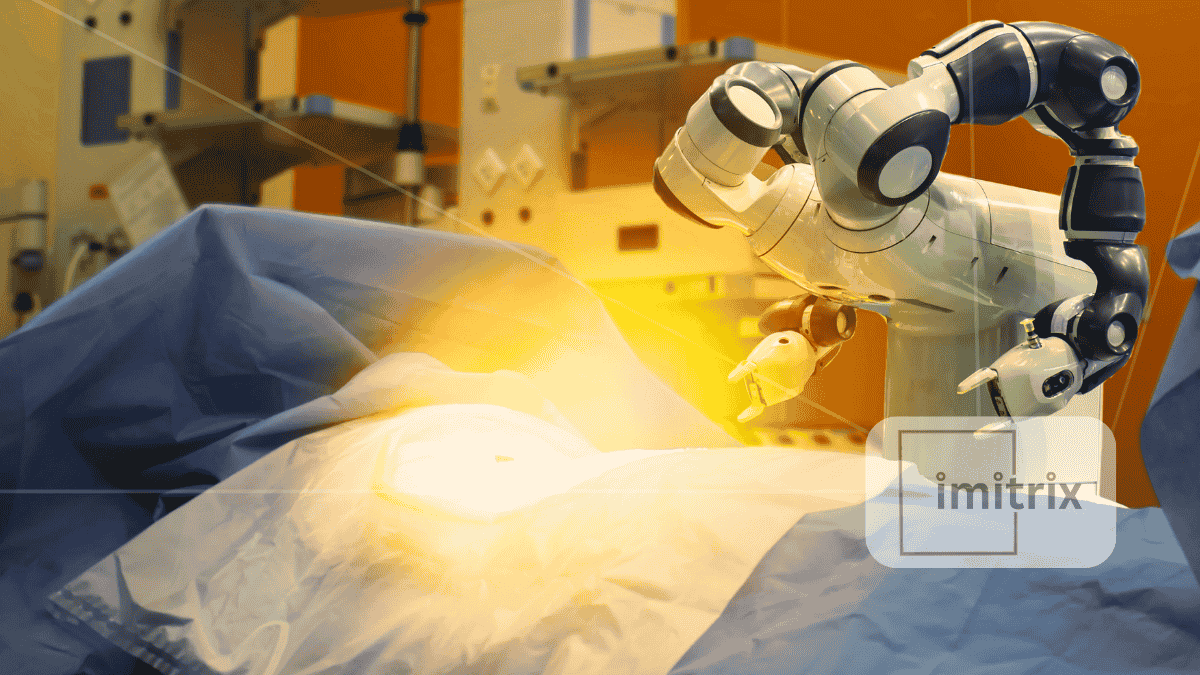Artificial intelligence (AI) is transforming modern medicine. Nowhere is this transformation more evident than in the field of robotic surgery. As hospitals and surgical centers integrate cutting-edge technologies, the combination of robotics and AI redefines what’s possible in the operating room. AI in robotic surgery is not just about advanced tools; it’s about better outcomes, fewer complications, and enhanced precision that ultimately saves lives.
The Rise of Robotic Surgery
Robotic surgery isn’t new. The first FDA-approved robotic system, the da Vinci Surgical System, came into use in the early 2000s. It allowed surgeons to perform minimally invasive procedures with the help of robotic arms, offering more control and smaller incisions than traditional surgery. However, these early systems lacked intelligence. They were guided entirely by human input.
Today, AI in robotic surgery brings a new layer of capability. Machine learning algorithms can now analyze massive datasets, learn from past procedures, and support surgeons with real-time decision-making. AI-driven systems can identify anatomical structures, predict complications, and even automate parts of the procedure under human supervision.
How AI Improves Surgical Precision
One of the biggest challenges in surgery is precision. A few millimeters can mean the difference between a successful operation and life-altering complications. AI-powered systems assist by:
- Enhancing visual clarity: AI algorithms improve image recognition and enhancement. They help distinguish tissues, detect tumors, and map out blood vessels with more accuracy than the human eye.
- Real-time analytics: AI analyzes data as the surgery progresses. If something deviates from expected patterns, it can alert the surgical team instantly.
- Motion scaling and tremor reduction: AI refines the surgeon’s hand movements, filtering out tremors and scaling movements to make them more precise.
- Predictive analytics: By learning from thousands of surgeries, AI can suggest the best approach for a given patient based on outcomes from similar cases.
These features make procedures safer and faster. More importantly, they reduce human error, which is a major factor in surgical complications.
Case Studies: Where AI in Robotic Surgery Is Making a Difference
Let’s look at some real-world examples.
- Prostate Surgery: Robotic-assisted prostatectomies have seen significant improvements in outcomes due to AI. Machine learning helps map nerve bundles around the prostate, minimizing the risk of incontinence and impotence post-surgery.
- Neurosurgery: Brain surgeries require extreme precision. AI-driven robots can plan and execute complex procedures like removing tumors with sub-millimeter accuracy.
- Orthopedic Surgery: Joint replacements are now more accurate thanks to AI. Preoperative planning software uses AI to design custom implants and guide the surgical robot accordingly.
In each case, AI doesn’t replace the surgeon. Instead, it augments their skills, offering tools that help them perform at a consistently high level.
Benefits Beyond the Operating Room
The influence of AI in robotic surgery extends beyond the surgery itself. Here are some of the broader benefits:
- Shorter recovery times: With more precise operations and smaller incisions, patients heal faster and experience less pain.
- Fewer complications: AI reduces the chance of surgical errors, infections, and other complications.
- Lower costs: While the initial investment in robotic systems is high, fewer complications and shorter hospital stays result in long-term savings.
- Data-driven improvements: AI systems collect data from each surgery, enabling continuous learning and refinement of surgical practices.
Hospitals using these systems report better patient satisfaction and improved clinical outcomes, which feed into quality ratings and reimbursement levels.
The Role of AI in Training and Simulation
Another key area where AI shines is in training new surgeons. Simulators powered by AI offer personalized feedback, adapting scenarios to the trainee’s skill level. They can replicate rare or complex cases that a trainee might not encounter during regular training. This ensures that future surgeons are better prepared, and more confident, when they step into the operating room.
Virtual reality (VR) and augmented reality (AR) platforms also use AI to create lifelike surgical simulations. These technologies reduce the learning curve and allow for skill refinement in a safe, controlled environment.
Ethical and Regulatory Considerations
Despite the promise, there are valid concerns. AI in surgery involves decisions that could have life-or-death consequences. Regulatory bodies like the FDA are still developing frameworks to evaluate these systems for safety and efficacy. Transparency in algorithm design, accountability in case of failure, and data privacy are all issues that need clear answers.
Patients, too, must give informed consent. They should understand how AI is involved in their surgery and what safeguards are in place. Trust is crucial, and that comes from transparency and clear communication.
The Future of AI in Robotic Surgery
Looking ahead, the integration of AI in robotic surgery will only deepen. We can expect:
- Fully autonomous surgical tasks: Certain repetitive or highly standardized tasks may become fully automated, freeing up surgeons to focus on critical decision-making.
- Greater personalization: AI will tailor surgeries to individual anatomy and genetic profiles, improving outcomes further.
- Remote surgery at scale: With 5G and advanced robotics, expert surgeons could perform procedures remotely across continents, assisted by AI systems.
These developments align with the broader push for healthcare with AI. From diagnostics to post-op care, AI is becoming a central pillar in modern medicine.
Conclusion
AI in robotic surgery represents a major leap forward for medicine. It enhances the capabilities of surgeons, improves patient outcomes, and drives efficiencies across the healthcare system. While challenges remain, the trajectory is clear: smarter tools, better surgeries, and lives saved.
As healthcare continues to embrace digital transformation, AI in robotic surgery stands out as a powerful example of how technology can work hand in hand with human expertise. This is not a future vision. It’s happening now—and it’s changing lives.

